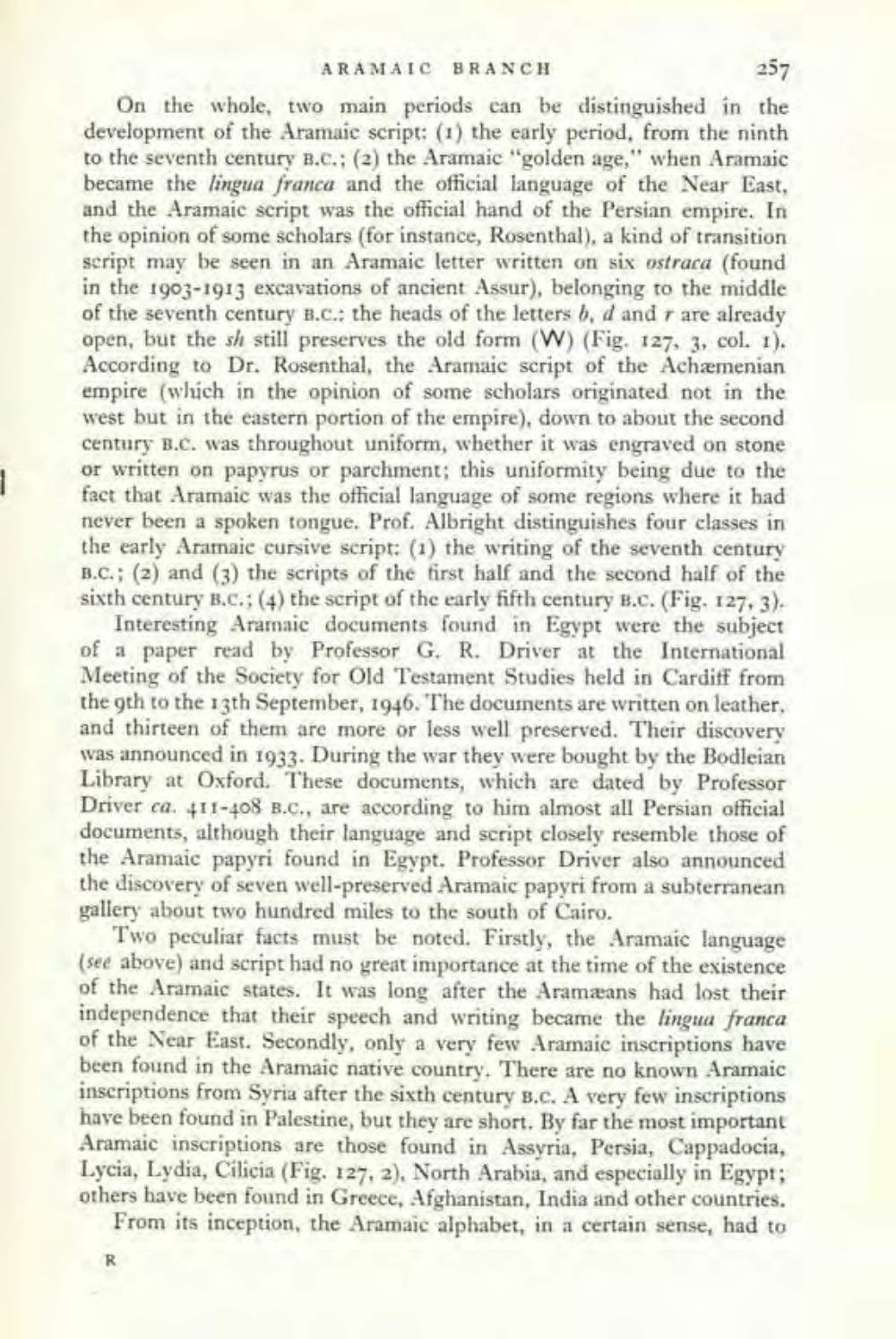________________
ARAMAIC BRANCH
257 On the whole, two main periods can be distinguished in the development of the Aramaic script: (1) the early period, from the ninth to the seventh century B.C.; (2) the Aramaic "golden age," when Aramaic became the lingua franca and the official language of the Near East, and the Aramaic script was the official hand of the Persian empire. In the opinion of some scholars (for instance, Rosenthal), a kind of transition script may be seen in an Aramaic letter written on six ostraca (found in the 1903-1913 excavations of ancient Assur), belonging to the middle of the seventh century B.C.: the heads of the letters b. d and r are already open, but the sh still preserves the old form (W) (Fig. 127. 3, col. 1). According to Dr. Rosenthal, the Aramaic script of the Achæmenian empire (which in the opinion of some scholars originated not in the west but in the eastern portion of the empire), down to about the second century B.C. was throughout uniform, whether it was engraved on stone or written on papyrus or parchment; this uniformity being due to the fact that Aramaic was the official language of some regions where it had never been a spoken tongue. Prof. Albright distinguishes four classes in the early Aramaic cursive seript: (1) the writing of the seventh century B.C.; (2) and (3) the scripts of the first half and the second half of the sixth century B.C.; (4) the script of the early fifth century B.C. (Fig. 127, 3).
Interesting Aramaic documents found in Egypt were the subject of a paper read by Professor G. R. Driver at the International Meeting of the Society for Old Testament Studies held in Cardiff from the oth to the 13th September, 1946. The documents are written on leather, and thirteen of them are more or less well preserved. Their discovery was announced in 1933. During the war they were bought by the Bodleian Library at Oxford. These documents, which are dated by Professor Driver ca. 411-08 B.C., are according to him almost all Persian official documents, although their language and script closely resemble those of the Aramaic papyri found in Egypt. Professor Driver also announced the discovery of seven well-preserved Aramaic papyri from a subterranean gallery about two hundred miles to the south of Cairo.
Two peculiar facts must be noted. Firstly, the Aramaic language (see above) and script had no great importance at the time of the existence of the Aramaic states. It was long after the Aramæans had lost their independence that their speech and writing became the linguu franca of the Near East. Secondly, only a very few Aramaic inscriptions have been found in the Aramaic native country. There are no known Aramaic inscriptions from Syria after the sixth century B.C. A very few inscriptions have been found in Palestine, but they are short. By far the most important Aramaic inscriptions are those found in Assyria, Persia, Cappadocia, Lycia, Lydia, Cilicia (Fig. 127, 2), North Arabia, and especially in Egypt; others have been found in Greece, Afghanistan, India and other countries.
From its inception, the Aramaic alphabet, in a certain sense, had to




